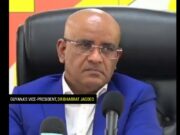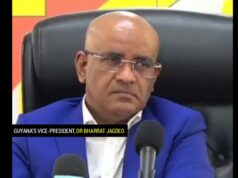Minister of Education, Priya Manickchand announced today that a series of initiatives designed to better integrate migrant children, especially those of Spanish origins, into Guyana’s school system, will be rolled our soon. Addressing the complexities faced by over 3,000 migrant children currently enrolled in classrooms across the country, Minister Manickchand emphasized the government’s commitment to ensuring that no school-aged migrant child is denied an education.
“We are crafting programmes to ensure that the integration of these children is in their best interest,” said Manickchand. She also underscored the need for sensible and practical administration of English as a Second Language (ESL) programmes. “How do we make sure English as a second language is something administered in a sensible, practical way that allows these children to integrate properly with other subjects? We’ll roll that out shortly,” she added.
To address the language barrier, the National Center of Educational Resources Development (NCERD) has taken significant steps. Despite challenges with staffing, NCERD’s Production Unit has developed instructional materials that enable even non-Spanish-speaking teachers to provide basic Spanish instruction. This initiative aims to bridge the gap for Spanish-speaking migrant children, ensuring they receive a foundational education while they adapt to a new language and curriculum.
Starting this September, primary school children will receive resources in their book bags, including age-appropriate Spanish dictionaries and texts. This effort aligns with President Irfaan Ali’s vision of making Guyana a bilingual country. “The intention of the president to make us a bilingual country is being met with the resources we have,” Manickchand noted.
In addition, the government has partnered with Coursera to design and deliver Spanish courses for all teachers. This professional development initiative is expected to equip educators with the necessary skills to teach Spanish effectively, thus enhancing the overall learning environment for both migrant and local students.
Minister Manickchand also highlighted a groundbreaking initiative launched last year during the National Grade Six Assessment (NGSA). Recognizing the high number of migrant students from Spanish-speaking countries like Cuba and Venezuela, the Ministry allowed these students to take their exams in Spanish. Students had the option to read the exam questions in Spanish and write their answers in either Spanish or English. This accommodation significantly improved their performance according to Manickchand.
“We offered the students the ability to write their papers in Spanish, and we saw them perform much better,” Manickchand revealed. This year, the marking of these exam papers has already begun, with dedicated sections for Spanish responses being evaluated.
This comprehensive approach by the Ministry of Education aims not only to support migrant children but also to foster a more inclusive and diverse educational environment. The Minister said that by equipping teachers with the skills to deliver bilingual education and providing students with the necessary resources, the government is paving the way for a more cohesive and integrated society.
She concluded her address on the matter by reiterating the importance of education in shaping the future of all children in Guyana, regardless of their background. As the nation continues to embrace its multicultural identity, she said these initiatives mark a significant step towards creating an inclusive educational system that values and supports every student.













